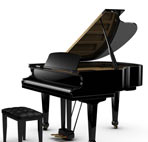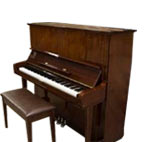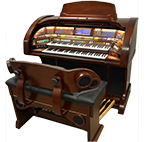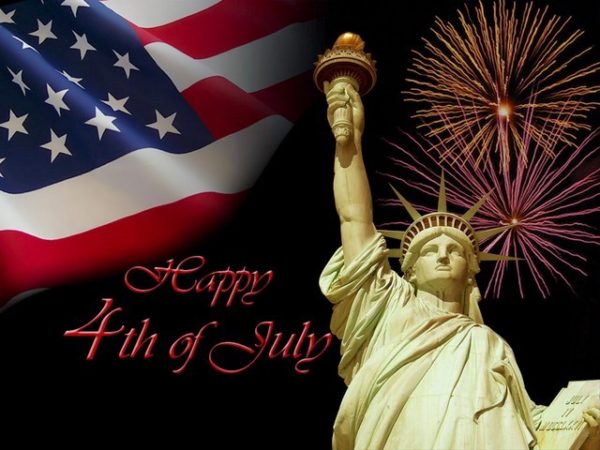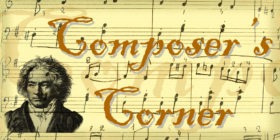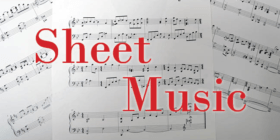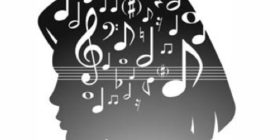There’s nothing like the sound of a rousing Sousa march, or a touching patriotic song, to bring out pride of country in the hearts of the American people. On July 4th our great nation celebrates the founding of our country. Celebrations would not be complete without the playing and singing of patriotic music. The month of July, 237 years ago, was a landmark time in our nation’s history. Our founding fathers had the foresight to establish the colonies into a central republic called the United States of America. Music played an important part in the beginning of this great nation.
History
Early American patriotic music usually grew out of some form of war and the outcome of the conflict. This music was used to inspire and motivate people to enlist in the military, promote valor in the field and cheer on our fighting forces. The power of music was a strong motivating force in building patriotism and love of country. It inspired emotional fervor and nationalistic pride in early times, as it does today.
Throughout history governments have empowered composers to write songs to move and motivate the populace.
Before American independence in 1776 some music classified as patriotic came from British origins. The tune Yankee Doodle was an example from this pre-independence period before the American Revolution. British soldiers mocked Americans by singing Yankee Doodle. Yankee was a negative term for Americans and Doodle meant fool or simpleton
Patriotic music first appeared in America during the Revolutionary War. Then followed the War of 1812, American Civil War, Spanish American War and the two World Wars. All of these wars contributed to a musical history of the American Republic. Some patriotic music was semi-religious in character due to the Puritan ethic of the early settlers. This form of music flourished in the 19th Century during and after the Civil War. After this war, music focused on rebuilding America to produce a unified front.
Composers and Their Music
The Star Spangled Banner, our National Anthem, is the most famous patriotic song in America. Most people think of Francis Scott Key (1779-1843) as the writer of the anthem. Key only wrote the poem – not the music. The tune was an old English song written by John Stafford Smith (1750-1836) an English organist and composer. It was officially adopted as our National Anthem in 1931. E.E. Bagley (1857-1922) wrote the National Emblem March using part of the Star Spangled Banner in the tune. The words “…and the monkey wrapped his tail around the flagpole,” were added later to the tune.
Stars and Stripes Forever, America’s National March, is one of the most famous patriotic pieces ever written. The revered American composer—the incomparable John Philip Sousa (1854-1932) was known as the “March King.” Sousa composed Stars and Stripes Forever in 1896. The melody came to him on a sea voyage returning from Europe. “When we reached the shore, I set down the measures that my ‘brain-band’ had been playing for me, and not a note of it has ever changed,” Sousa wrote. He also composed: Washington Post, El Captain, Semper Fidelis and The Liberty Bell, among many other great songs and marches.
America The Beautiful, with music by Samuel Augustus Ward (1848-1903) and the poem by Katharine Lee Bates (1859-1929) is one of our country’s favorite songs. The words for America or My Country Tis of Thee were written by Samuel F. Smith and added to an old German tune. This music was adopted by the English for their anthem God Save the Queen.
The great song, God Bless America, (America’s unofficial national anthem) was written by Irving Berlin (1888-1989) and popularized by songstress, Kate Smith in the late 1930’s. This song has become a traditional favorite played and sung at the seventh-inning-stretch in major league baseball games in America.
George M. Cohan (1878-1942) popularized patriotic songs with You’re a Grand Old Flag, Yankee Doddle Dandy and the famous World War I song, Over There.
Other memorable patriotic songs include: When Johnny Comes Marching Home, This is My Country and God Bless the USA.
The Battle Hymn of the Republic was the rallying anthem of Union soldiers. The source of the title, for John Steinbeck’s book, “Grapes of Wrath” was found in the first verse of the poem “Battle Hymn of the Republic” by Julia Ward Howe in 1862.
Many patriotic songs owe their existence to national or international conflicts. If one examines the words of these songs they illustrate, in music and words, a history of the Republic. Throughout our country’s existence change as been a hallmark of our culture but the sentiments, pride and hope found in this genre of music remain a steady constant through the ages.
Patriotic music has influenced our military, our country’s leaders and the common man. The power of music in our country’s heritage is alive and well and will live forever in the hearts and minds of America’s citizens past, present and future.


